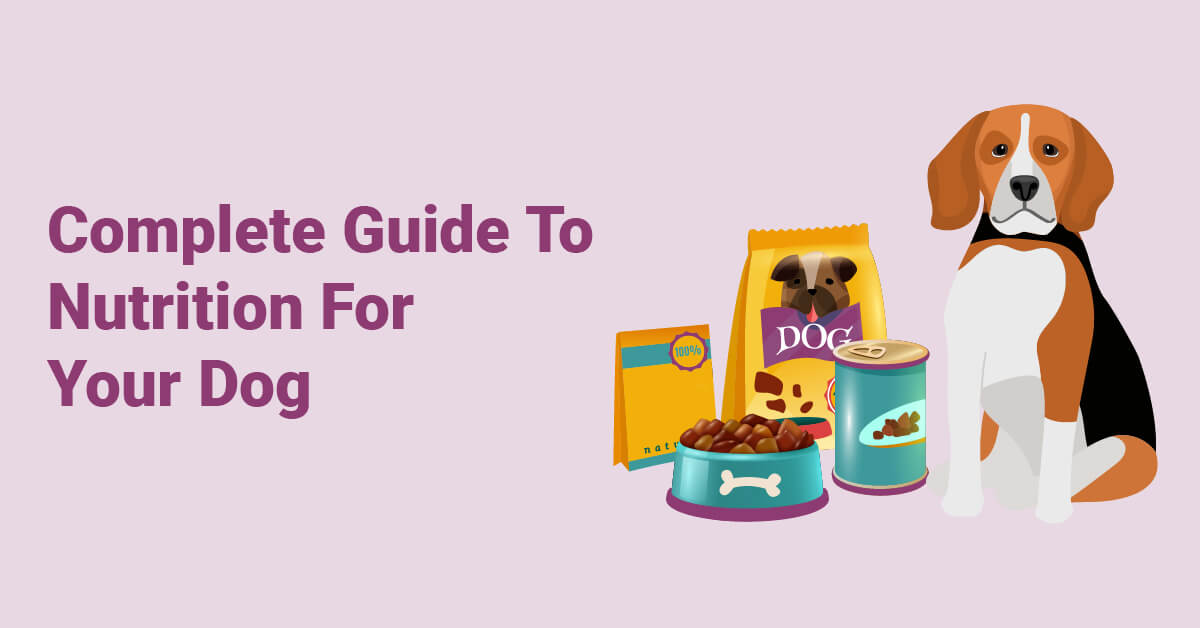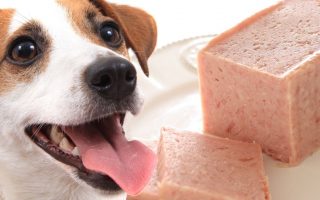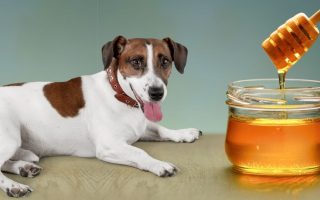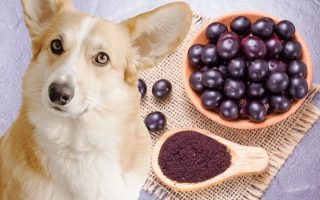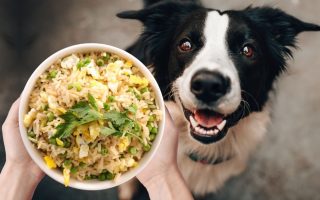How To Make Sure Your Dog Is Eating Well Enough
One of the best things you can do for the health of your dog is to make sure you are feeding them well.
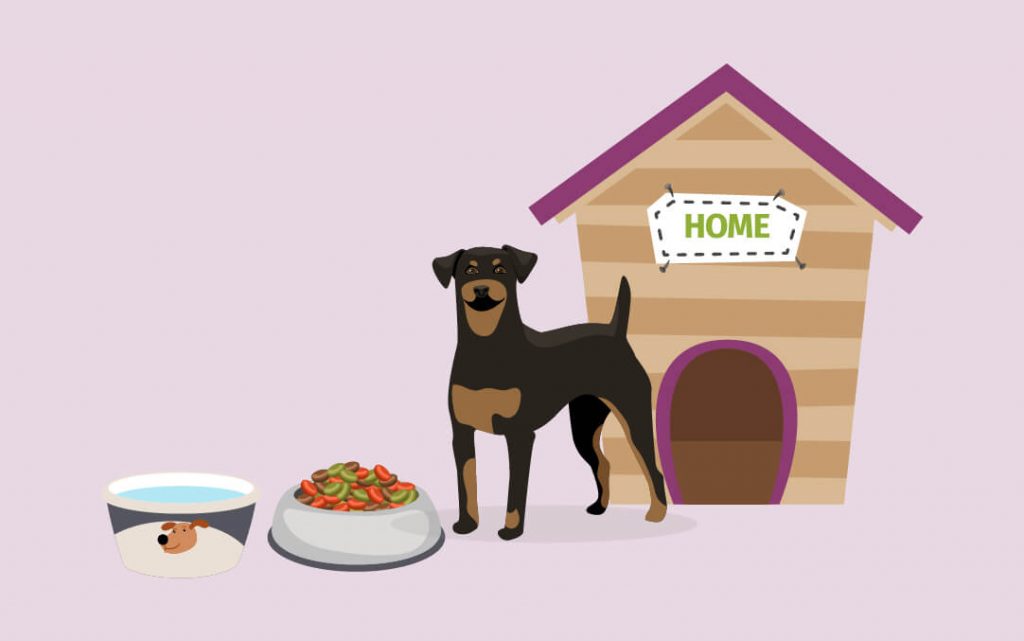
We all want our dogs to live forever. But we know that this is sadly not possible.
However, there is something we can do to keep our pets around for longer – and that is to keep them healthy. Feeding your dog the correct way can extend its life by a few years.
When you think about your dog’s diet, you might find yourself wondering – if domestic dogs aren’t that genetically different from wild dogs and wolves, why don’t we feed them in the same way?
You’d be very right to ask that question because thanks to the way they have evolved, dogs have evolved to best suit a low-carbohydrate, meat-heavy diet. However, most of us do not feed our pets in this way.
Modern, commercial pet food is low in moisture, low in nutrients, and high in carbohydrates. These types of food are not at all suited to our dog’s metabolic system and can put them under a lot of physical stress.
Lots of dogs have health issues because they are not getting all of the nutrients they need out of their diet.
If you notice your dog eating dirt, grass, or even bugs while out on their walk, they might be trying to tell you that they need more from their diet.
Essential Nutrients For Your Dog
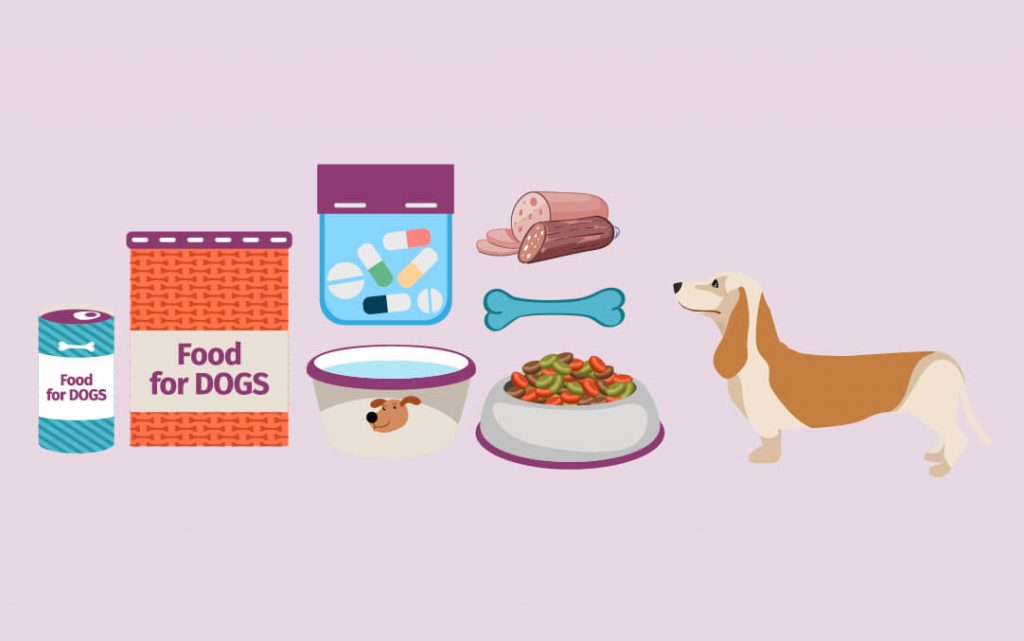
Before we put together a meal plan for your pet, it is important that you understand why we are recommending the types of foods we are.
These foods have been picked out because they provide the number of proteins, fats, vitamins, minerals, and water for them to thrive. In this section, we are going to go through each of these categories and discuss why they are so important to your dog’s diet.
Like with human diets, it is important to find balance in your dog’s diet. They need fats, but not too many. They need protein, but it’s not the only thing they need.
Proteins
Protein is an important macronutrient that dogs of all sizes need in their diets.
Proteins are used by your dog’s body for nearly all of its functions.
It is worth noting that puppies (because they are constantly growing), pregnant dogs, and dogs that are lactating need to consume twice the amount of proteins that other dogs do.
Proteins are required to break food down into energy and prevent it from turning straight into fat. Even if your dog is overweight, you should still make sure they are getting a lot of protein.
Proteins are used by dogs’ bodies to make hormones, neurotransmitters, enzymes, and antibodies. These are the building blocks of the majority of bodily functions in dogs.
Proteins are essential for a healthy coat, strong nails and teeth, good skin, effective muscles, and strong bones – for dogs.
If you have a very active dog or a working dog then they are going to benefit from having more proteins in their diet.
Finally, proteins are the easiest source of essential and non-essential amino acids for dogs. These acids are used in most bodily functions by dogs.
Best Sources Of Protein For Dogs
- Eggs
- Fish
- Lean meat
- Lentils
- Brown Rice
- Beans
Fats
There are many different types of fats out there – not all of them are good, but not all of them are bad. They are an important part of every dog’s diet, even dogs that are trying to lose weight.
There are three main types of fat that we are going to talk about today:
- Saturated Fats (dairy like cheese and butter)
- Polyunsaturated Fats (fish, seeds, sunflower oil)
- Monounsaturated (olive oil)
You want to make sure that the majority of the fats in your dogs’ diet come from the Monounsaturated and Polyunsaturated food groups.
These types of fats help to keep your dog’s fur and skin healthy. They are also a key source of energy for your dog.
One of the other benefits of these fats is that they provide your dog with omega-3 and omega-6 fatty acids – both of which are absolutely essential for canines.
These two fatty acids aid the absorption of fat-soluble vitamins. They help your dog to regulate their internal temperature. They protect and nourish your dog’s internal organs. And they also support your dog’s nervous system.
Best Sources Of Fats For Dogs
- Hemp Seed oil
- Sunflower oil
- Cod liver oil
- Krill Oil
- Low-mercury fish, most notably salmon and tuna
Vitamins
Just like humans, dogs require a small number of vitamins on a daily basis to improve and support the function of their bodies.
There are two main groups of vitamins that dogs need in their diet. Fat-soluble vitamins that are stored in areas like the liver and fatty tissues. There are also water-soluble vitamins that are not stored in the body.
There are 6 really important vitamins that all dogs need in their diet:
- Vitamin A (fat-soluble)
- Vitamin B12 (water-soluble)
- Vitamin C (water-soluble)
- Vitamin D (fat-soluble)
- Vitamin E (fat-soluble)
- Vitamin K (fat-soluble)
Vitamin A is essential for a functioning canine immune system. Vitamin B12 is a key requirement for a dog’s nervous system to function properly.
Vitamins C and E are both powerful antioxidants. Vitamin D helps dogs to regulate their calcium and phosphorus levels. Vitamin K is used to help heal wounds and blood to clot in a dog’s body.
Feeding your dog a combination of meat and dog safe vegetables is the best way to make sure that they get all the nutrients and vitamins they need.
Best Sources Of Vitamins For Dogs
- Muscle meat
- Organ meat (like liver)
- Leafy greens
- Carrots
- Mango
- Cucumber
- Spinach
Minerals
Vitamins are organic compounds that support your dog’s body, minerals are inorganic compounds that do the same. This is not to say that they are unnatural, it just means that they come from sources other than plants or meat.
Just like humans, dogs cannot make minerals in their bodies, so the only way they can get them is through their diet.
Minerals like calcium and phosphorus are essential for healthy bones. Sodium, chloride, and potassium are needed to keep the fluid balance in the body correct.
Sodium, potassium, calcium, and magnesium are used by the nervous system. Selenium allows your dog to absorb antioxidants.
Both Zinc and Iron are used in the blood. Iron helps the blood to carry oxygen around your dog’s body and Zinc is needed to heal wounds and clot blood.
You will want to make sure that they are consuming Macronutrients and Micronutrients.
Macronutrients include magnesium, phosphorus, sodium, potassium, chloride, and calcium. Micronutrients include copper, zinc, manganese, selenium, iodine, and iron.
Bigger dogs should have their calcium content monitored, but puppies in all breeds will need nearly double the calcium when they are still growing compared to later in life.
Best Sources Of Minerals For Dogs
- Low-mercury fish
- Shellfish
- Organ meats
- Bones – avoid small bones and bird bones as they can shatter and get stuck in your dog’s throat.
Water
Dogs are more sensitive to water loss than humans are, despite being only 70% water. Losing 10% of their body’s water can kill a dog. So, you need to make sure that they are drinking enough.
Dogs use water to flush toxins from their bodies, provide protection for their nervous system and their organs, regulate their body temperature, move nutrients around the body, and aid their digestion.
The best way to make sure your dog is drinking enough water is to make sure there is a bowl of water in the room they spend their time in, and also make sure there is something they can drink from in your garden as well.
Balanced Dog Meals
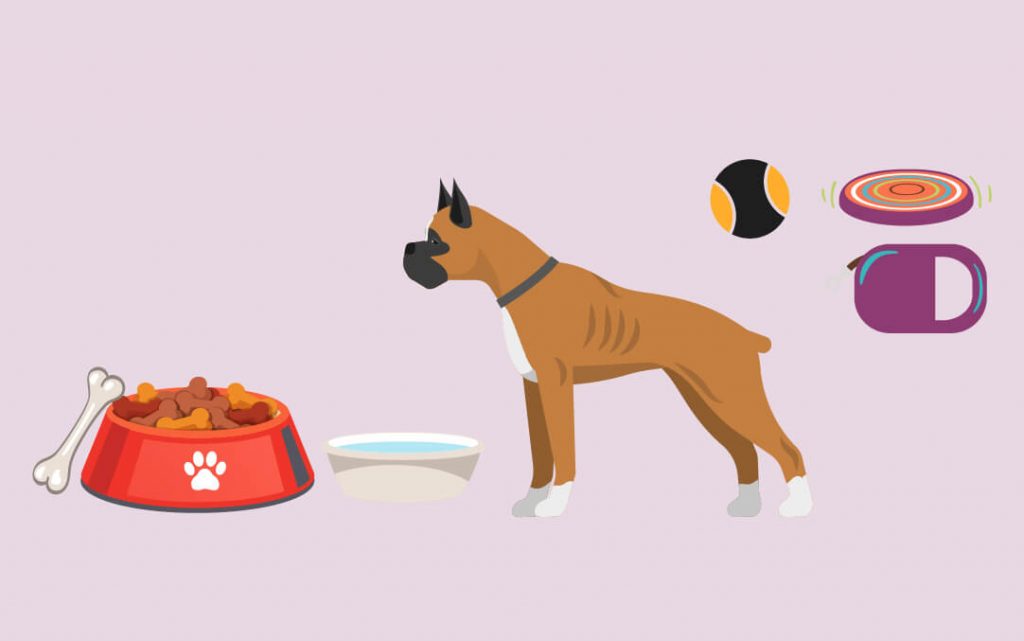
Now that we have talked about all the different elements that your dog’s diet requires. It’s time to start looking at how much of each you should be giving your dog.
When putting together a meal plan for your dog, you will need to think about what you are feeding them and whether you will need to supplement anything into their diet.
A Balanced And Species-Appropriate Diet
If you know anything about dogs, you will probably be aware that not only does your dog’s diet need to be species-appropriate but also breed-appropriate.
Some dog breeds will have individual needs that you can talk to your vet about – for example, as we mentioned earlier, bigger dogs should avoid consuming too much calcium as they are vulnerable to arthritis in later life.
Smaller dogs obviously need to eat less than larger dogs. There are online charts that you can use to work out how much you should be feeding your pooch, or you can talk to your vet.
What A Balanced Diet For A Dog Should Include No Matter Their Breed
Firstly, you should be avoiding filler ingredients like grains, potatoes, corn, and other high-carbohydrate foods. You should include a small range of fresh vegetables – these will mimic the stomach contents of a wild dog’s prey.
In the summer, you may want to consider giving your dog fruits that have a high water content – like watermelon or mango – to help keep them hydrated. You should make sure they are drinking as much water as they want throughout the year.
They will then need lots of protein and moderate levels of animal fats. The meat and fish that you feed your dog should also provide them with a good amount of omega-3 and omega 6 fatty acids.
Supplementing A Dog’s Diet
Depending on the time of the year, your resources, and your dog’s taste – you may need to supplement your dog’s diet at some points throughout the year,
There are some things that your dog needs that they will struggle to find in their food, even if you are hand-making their food. This is nothing to worry about, instead, you can add some supplements to their diet.
Cold weather dogs (Huskies, Labradors, St Bernards) will benefit from cod liver or krill oil being added to their food. This will help their skin and their coat to stay healthy no matter the weather. Smaller dogs may not need this.
You should also consider giving all breeds of dogs probiotics – this will help to improve their gut health, which will have knock-on effects on the rest of their body. You can provide these probiotics by adding yogurt to your dogs’ diet – or by giving them probiotic bills if you are trying to get them to lose weight or avoid too much calcium.
Meal Plan
Now, we are going to take a deeper dive into 4 different meal plans that we recommend for dogs.
All of these meal plans will take into account the age or life stage of the dog. You will then need to work out what portion sizes are appropriate for your own pet. You can do this by taking into consideration the following factors:
- Bodyweight
- Age
- Breed
- Size
- Energy levels
- Metabolism
Vets generally use the following equation to calculate the number of calories you should be feeding a dog. However, it is a general rule, so talk to your vet for their professional advice on the subject.
Canine Daily Calories = Body Weight (kg) x 30 + 65
At each stage of their life, how much your dog will need to eat, what kind of food they will need to eat, and when in the day you should be feeding them will change.
For example, puppies need to be fed smaller meals multiple times a day. They will start off on a mix of milk and solid foods and eventually move towards a diet of all solid foods.
As your dog gets to the senior stage of its life, it will start to require less food and a different ratio of nutrients.
Meal Plan For Puppies
For the sake of this meal plan, we are considering puppies any dogs younger than 6 months old. Once they turn 6 months old, you can move them onto the meal plan for adult dogs.
Between the ages of 0 weeks and 6 weeks old, you will want to let the puppies drink their mother’s milk. They will feed between 5 and 8 times a day. They will make it very clear when they are hungry – they will start yapping.
If they are not with their mother then you should feed a litter of puppies every 4-5 hours. This will mean waking up in the middle of the night to feed them with a puppy milk mix.
Some puppies might move onto solid food earlier than others. Some may move over as early as 4 weeks of age.
Once they have reached the 6 week threshold they will most likely be ready to move over to solid food. When they reach this point the puppies should be fed once in the morning, and once in the evening.
Once they reach 3 months of age they may need some treats that help them to teeth – the latest this will start is at 6 months old.
Meal Plan For Adult Dogs
Adult dogs should be fed twice a day – once in the morning and once in the evening. They should be given the same amount of food with each meal. This allows dogs to digest their food properly and avoid bloating.
Some people suggest removing a dog’s bowl after 30 minutes even if they have not eaten all of their food. This is not something we recommend. If your dog is not eating their food within half an hour of it being put down, you may want to take them to the vets.
Your dog will be considered an adult dog when they reach 80-90% of their full body weight.
Work out how much food you are going to give your pet using the equation above. If your dog is a working dog then they might need an extra 20-40% a day. However, if you have a lap dog then we recommend reducing the amount you feed them by around 10%.
If your dog has a health condition or is over or underweight then you will need to talk to your vet about the best way to feed them to manage their condition.
Meal Plan For Senior Dogs
As your dog gets older, its body will change in many ways. The way their body and their immune system function will also change. Their metabolism will slow too.
As your dog gets older, you will want to focus as much as you can on trying to keep them at a healthy weight. This prevents a lot of health conditions in later life and will also make moving easier for them.
Talk to your vet about how much you should be feeding your pet – they will ask you about how much they are moving, what their energy levels are like, and how strong their appetite is. This will help them to work out what your dog needs.
You want to concentrate on giving your older dogs food that is easy to digest – this includes the protein that you are giving them.
As our dogs get older their kidneys get less effective, so you need to feed them food that is easy to digest to avoid straining that organ.
You can feed your senior dog twice a day, but if they are struggling to eat the bigger meals you can give them smaller ones throughout the day or hide some of their food in their toys.
Meal Plan For Pregnant And Nursing Dogs
If you have a pregnant dog then you will need to completely change what you feed them. You can still feed them twice a day, but you need to make sure that you are not overfeeding them because their stomach expanding can make them uncomfortable.
When you find out that your dog is pregnant, your vet will be able to instruct you on how to change their diet.
They will probably have to eat a certain type of food designed especially for pregnant dogs. They will then need to change to a diet for nursing dogs.
The vet will probably also give you a list of vitamins and supplements for you to start feeding your dog. You will need to feed her separately from any other dogs in your household.
While these changes may seem like a lot of effort, they will help to keep your dog safe during her pregnancy and help to keep the puppies healthy while they are in the womb.
Once the puppies have been born, you will want to make sure you drastically increase the amount of calcium your dog is having. They will need to give their puppies a lot of calcium and you don’t want the mother to end up deficient.
Types Of Dog Foods – Homemade Or Commercial?
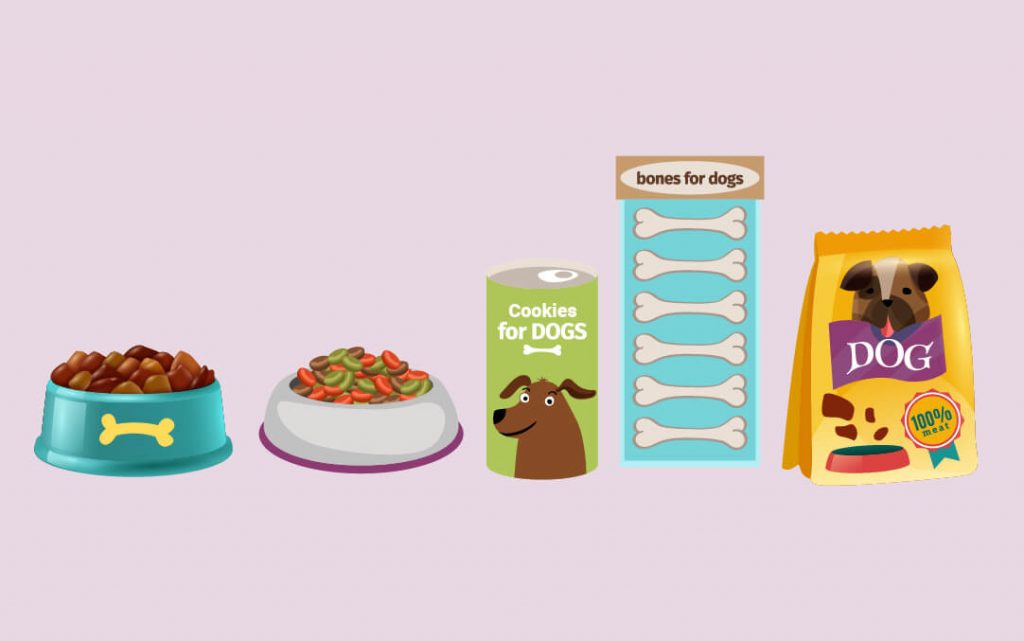
Now that you know what your dog needs in its diet, how much it needs to be fed and when it needs to be fed.
It is time to look at the different types of food that you can give your dog.
As you will have already been able to gather while reading this article, not all dog foods are made equally. There are some options that are much better for your dog than others.
There are two main groups that dog food falls into – homemade and commercial.
Commercial dog foods are mass-made and it is generally processed. It is a new idea in the world of dog food.
It has only been around for about a century. Before that, everyone would have made their dog food at home.
Commercial dog food is typically made from leftovers of the human meat instrusty and can vary in quality depending on the batch and the brand.
Most dog food made in this country does not go through inspections and they are not always filled with ingredients that are good for our dogs.
We won’t go into too much detail about the things that have been found in commercial dog food as the topic can be quite unpleasant.
Another issue that we have with commercial dog food is that its moisture count is usually too low to be good for our dogs. When they eat commercial dog food they are not getting enough water out of it.
Instead, we would recommend feeding your dog a combination of homemade and raw food.
Raw food is made up of different meat parts and homemade food can include any of the healthy ingredients that we mentioned earlier in the article.
Dog Drinking Schedule
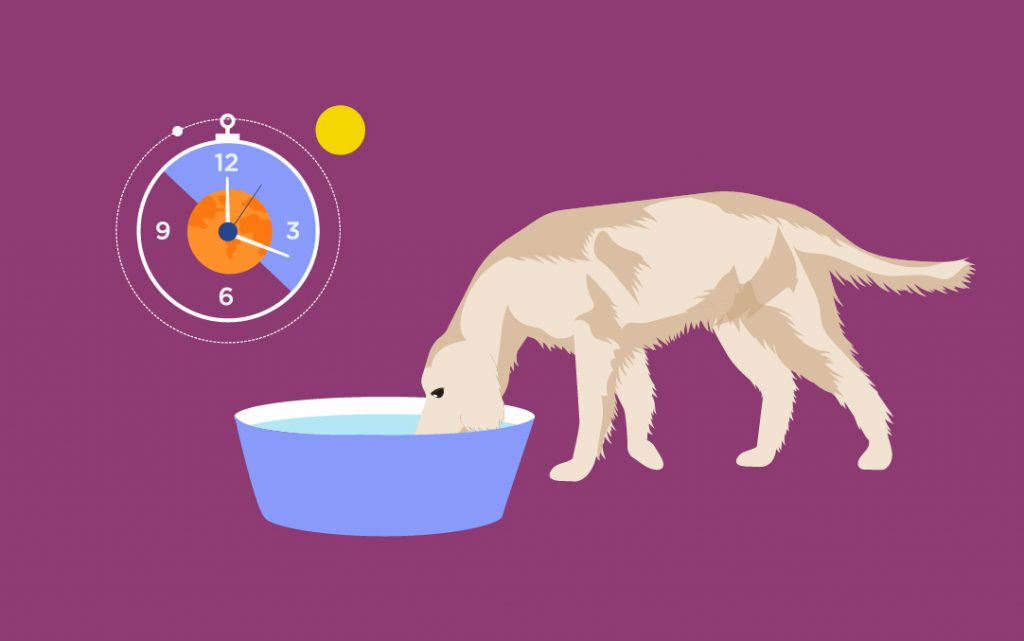
As we mentioned above, losing 10% of their water content can be fatal to some dogs. They are much more sensitive to a change in water levels than humans are.
Too little water can lead to dehydration – long term dehydration can cause kidney stones, organ failure, and liver damage.
You will want to make sure that your dog has access to clean and fresh water all day. There should be one water bowl in the room where they spend most of their time for every dog in your home.
Dogs can also drink too much water, although this is rarer. You will want to keep an eye on how much your dog is drinking and how much it is peeing.
Particularly, if you have multiple dogs in your home and it is hard to keep track of how much they are drinking out of their bowl.
If you move your dog over to handmade food and they start to drink less, don’t worry. Their kibble probably had a lot less water in it and they had to get the moisture from drinking instead.
Dog Drinking Guidelines
When you are trying to work out how much water your dog should be drinking, you need to take into account the following 6 things:
Age
adult dogs are pretty good at making themselves drink when they are thirsty. Puppies are not – they need to drink about half a cup of water every 2 hours.
Weight
a dog should be drinking half an ounce of water for every pound that they weight
Weather
you need to make sure that your dog is drinking more water as the temperature starts to rise in the summer
Medication
some medication will require you to give your dog more or less water, so check with your vet when they prescribe it
Food
if your dog is eating a very moisture-rich diet, then they won’t need to drink as much. But they may need to drink more if they are eating kibble.
Exercise
the more exercise your dog does, the more water they will need to drink
Some dogs do not like to drink out of their bowls. For many dogs, this is because their bowl is too small. Bigger dogs may prefer to drink out of a bucket or a trough.
Dog Food Allergies
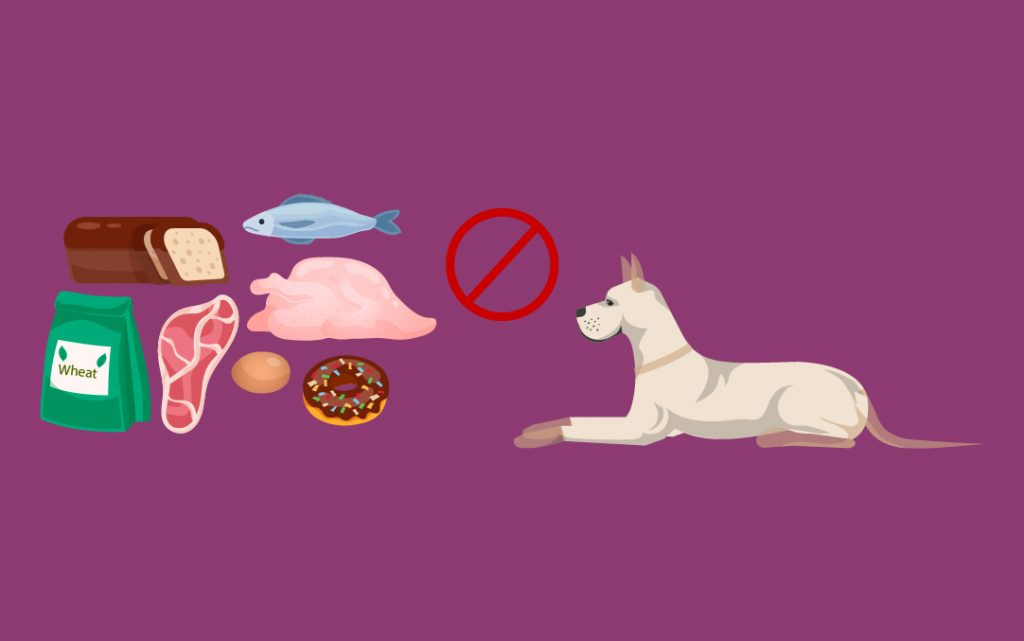
Many people are surprised to learn that dogs can have food allergies. And that many of their allergies are similar to the ones that humans can develop.
Some breeds are more likely to develop allergies than others. However, the symptoms of allergies are similar across most breeds.
A dog that is having an allergic reaction might start vomiting, develop diarrhea, get a rash, get flaky skin, might experience bloating, they might also get swelling around their face or throat.
Repeated ear infections are another sign of allergies in dogs.
The most common things for dogs to develop allergies to are grains and gluten, chicken, and food colorings.
As well as possibly being allergic to a range of food, there are many foods that humans can eat that are toxic for dogs.
Here are 10 foods and drinks that are toxic to dogs:
- Avocado
- Onion, Garlic, as well as, other plants in this family
- Chocolate
- Grapes (and raisins)
- Macadamia nuts
- Alcohol
- Sugar and artificial sweeteners
- Corn
- Chicken bones
- Coffee
Dog Nutrition Costs

Many people stick to feeding their dogs commercial food because it can be a lot cheaper and quicker than making them food at home. We totally understand this.
In this section, we are going to share with you a few different ways that you can keep the costs down when it comes to making food for your dog at home.
Idea 1 – Half And Half
If you can’t afford to give your dog food that is completely made at home, why not go halves?
What we mean by this is that you make up half of the calories in the meal with kibble of commercial food and the other half with the food you have cooked at home.
Idea 2 – Purchase Off Cuts From A Butcher
Most butchers will do packs of raw meat for dogs that are made up of the cuts of meat that people don’t typically want or eat.
You may find that your local butcher does this at a discount and that it is much cheaper than buying meat at the grocery store.
Idea 3 – Buy Meat In Bulk And Freeze
Our final suggestion is that you go to a bulk buying store like Costco, and buy large amounts of meat at a discount price. Then freeze this meat so that it will last longer.
Summary
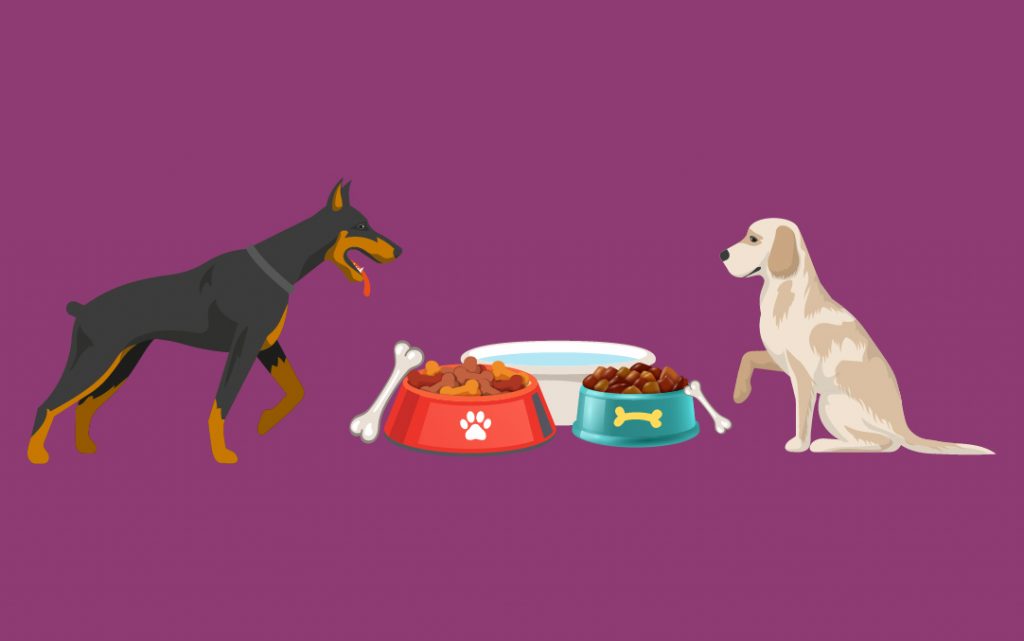
Over the last 70 years, the ways we feed our dogs have changed. Dog food has gone from being a mixture of meat and vegetables to being dry biscuits or jellied meat from a can.
Our dogs, particularly if we have a big dog breed, need more than this to thrive. It’s like asking people to live off of cookies and hot dogs – it’s really not a good idea.
What you will need to feed your dog will depend on their breed and what age they are. Pregnant dogs also need to eat differently from other dogs as they are supporting a whole litter.
Once you have decided to change your dog’s diet, you can refer to the meal plan guides that we have put together in the article above.
They will help you to put together a diet for your dog that means they are getting every nutrient they need to live a healthy life.
When you are preparing food for your dogs, rather than giving them commercial pet food, you are helping to support their immune system and other key parts of their bodies. You are making your dog a more healthy animal.
You May Also Like:
Best Bone Broth For Dogs (Top 10 & Why They’re Good)

